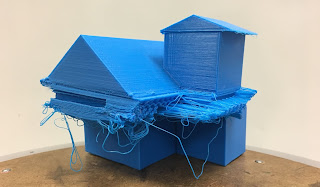Automation has displaced millions of workers over the past generation. In recent years, half of those displaced workers have exited the workforce, never to work again. This means that more of our students, than has been the case for the last century, will have no jobs at all.
"Approximately 25 percent of U.S. employment (36 million jobs in 2016) will face high exposure to automation in the coming decades (with greater than 70 percent of current task content at risk of substitution)."
Muro, Maxim, Whiton, Hathaway
Automation and Artificial Intelligence
Brookings Institution
January, 2019
We must avoid becoming "product fixated." If a student fails to complete a project, but showed excellence in the design of a portion or component, we should consider giving more weight to that subset. Individualized education is inherently "unfair" in the traditional sense – that is it is not equal, it is equitable. Students' ability to push through failure, collaborate, adapt and synthesize are far more important than an end-of-the-unit widget.
So what we’re doing is training people to live. We’re training people to deal with the challenges in life that we cannot predict. We’re training people to analyze and solve problems that no one has thought of. We're training them to become the fellow citizens that we all need.


